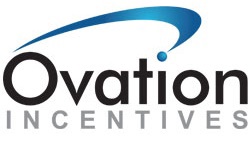“We’re seeing a big shift in how people are working. Work is getting done differently and the people strategy is at the forefront of that,” according to Denise Willett, senior director EMEA at Achievers.
“Employee engagement is key and recognition is part of that. Recognition is the simplest and top trigger of employee engagement.”
Willett was speaking at HR magazine and Achievers’ ‘Recognition for recognition: Why it’s important and how to get it right’ webinar. She asserted that while recognition is “not new” the way organisations are now approaching it is.
“It’s moving away from a culture of people being recognised once or twice a year to people being recognised for what they’re doing every day. And it’s moving away from everything having to be tied to big rewards,” she said.
But despite this shift, a poll taken during the webinar found that many organisations are not yet treating this as a strategic activity.
When asked how extensive and sophisticated the recognition strategy at their organisations is currently, 43% said not very and 36% said somewhat. Additionally, 15% said they had no recognition strategy at all.
And so Willett, together with Everton Football Club’s head of people engagement Clare Kearney and Wealmoor’s former director of HR and talent and client partner at Let’s Talk Talent Chadi Moussa, set out to discuss how to get recognition right.
Recognition offerings
Staff awards were found to be the most popular offering, with one in five (19%) reporting that these are part of their firm’s strategy. Also popular are celebrations of career milestones (18%) and staff suggestion schemes (13%).
Kearney shared details of Everton’s staff awards – part of the football club’s journey on recognition. This includes linking the club’s motto Nil Satis Nisi Optimum (meaning nothing but the best is good enough) to the annual staff awards and the values employees must demonstrate to be recognised.
“It’s about how people go about their jobs rather than just what they deliver,” Kearney explained. She added that while “first team performance is at the heart of what we do”, it’s also important to “recognise the team behind the team”.
Moussa said technology poses a big opportunity for organisations to deliver real-time manager-to-employee and employee-to-employee recognition.
“Recognition needs to be authentic, timely and consistent, and technology enables that,” he said, highlighting its importance for teams working across different offices.
However, despite the benefits, uptake of recognition tech seems slow, with just 7% of poll respondents having an online recognition platform and 2% a mobile-ready online recognition platform.
The two Rs
Those polled were more likely to link recognition to bonuses and financial rewards (16%). Which is nothing new; the ‘two Rs’ of reward and recognition have long gone hand in hand for HR.
But Moussa pointed out that linking recognition to reward isn’t always the most effective approach.
“If we have agreements that say ‘if you do this then you get this’ the reward is expected,” he said. “However, it’s more of a hygiene factor and that’s not going to create an emotional connection.”
Creating this kind of connection is more powerful than linking recognition to financial or even non-financial rewards, he explained. It’s more impactful, for example, for a boss to take a team out for dinner and tell them how well they’ve done rather than giving them a gift card, he said.
The element of surprise can also be powerful, he added: “So it’s absolutely right to give someone a reward if they’re not expecting it, if there is genuine surprise and you can be clear on why you’re giving them it.”
Empowering managers
Creating this emotional connection – and a culture of recognition – involves empowering managers to recognise staff, Moussa continued. “HR should empower managers so it’s not about having a central team that says ‘this percentage of employees get rewarded’,” he said.
“Empower managers to give them trust but also give them the capability to do that,” agreed Kearney. “Ultimately you want to get to the point where managers own that responsibility...
“It really comes down to competent management. You can design programmes but, to be successful, you need line managers who get it, live it and breathe it so that it becomes the natural, organic way,” she added.
“If you know your people and have good skilled managers then I think recognition is one of the simplest things you can do.”
Peer to Peer
Beyond managers recognising teams, Willett encouraged organisations to “take it a step further” and empower employees to recognise each other. “Give people £5 or £10 a month to give to each other when they think someone has done a good job,” she said.
Willett described leaders as “ambassadors of creating recognition cultures”. She said: “When leaders recognise direct reports their direct reports are more likely to recognise someone else.”
“It works by reciprocity – if you’re recognised, you’re more likely to recognise others,” agreed Moussa.
However, when it comes to employee-to-employee recognition, the panel warned that HR must avoid a popularity contest.
It’s crucial to “find a balance between empowerment and control” to ensure distribution of recognition is fair and proportionate, advised Kearney.
“But with employee-to-employee [recognition] you may not have that visibility,” she said. “So it comes back to behaviour and culture – you have to trust people.”
Training
The panel spoke on the importance of training to ensure all staff are recognising each other informally.
Willett said she’s seen many organisations embed recognition in management training. “When leaders live and breathe a culture of recognition it works best,” she said. “And onboarding training is important as well.”
This means setting expectations as soon as people come through the door, added Moussa. But he reinforced that while guidance is necessary, organisations should avoid creating too much structure as this can create a “cycle of giving feedback on the feedback [managers and staff are] giving”.
One size doesn’t fit all
When asked about recognising personality types who might feel uncomfortable with public recognition, Moussa asserted that personalisation should be integral to any strategy.
“Understand people’s personality types as some are very British,” mused Kearney, adding that it’s important to recognise people in their own way.
“The word recognition is so wide reaching, there’s always a way regardless of the individual,” she said. “It comes back to knowing the individual and thinking of something that works for them.”
A recording of the webinar is available for those who missed the live event
This piece appears in the October 2019 print issue. Subscribe today to have all our latest articles delivered right to your desk












